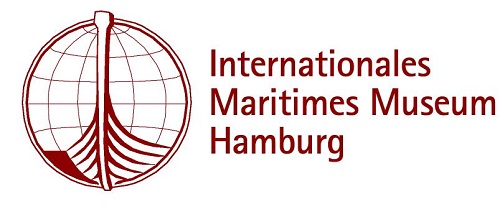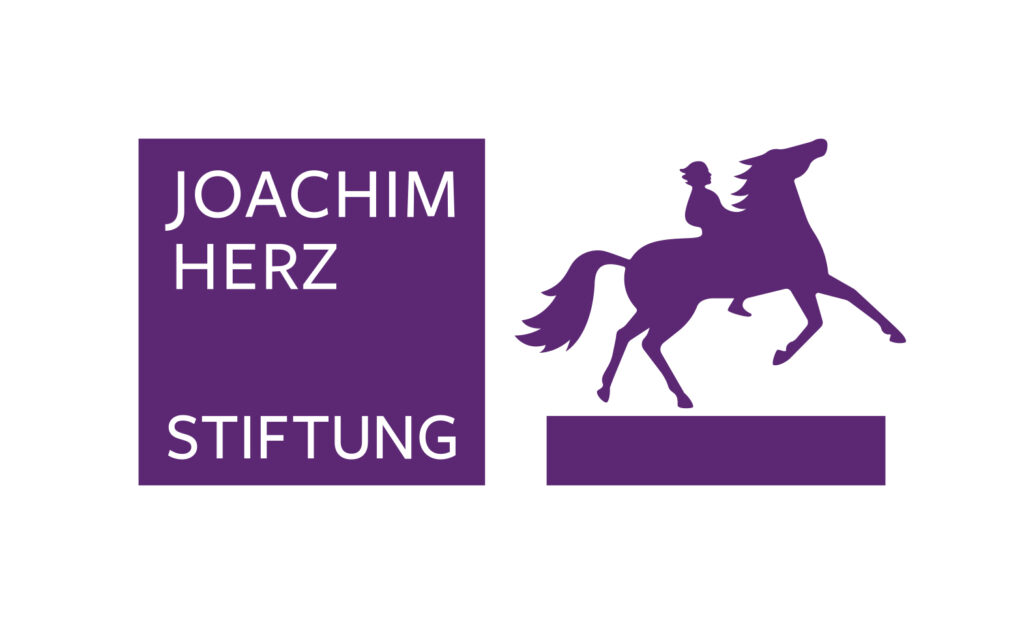Guide to deck 7: Marine Exploration
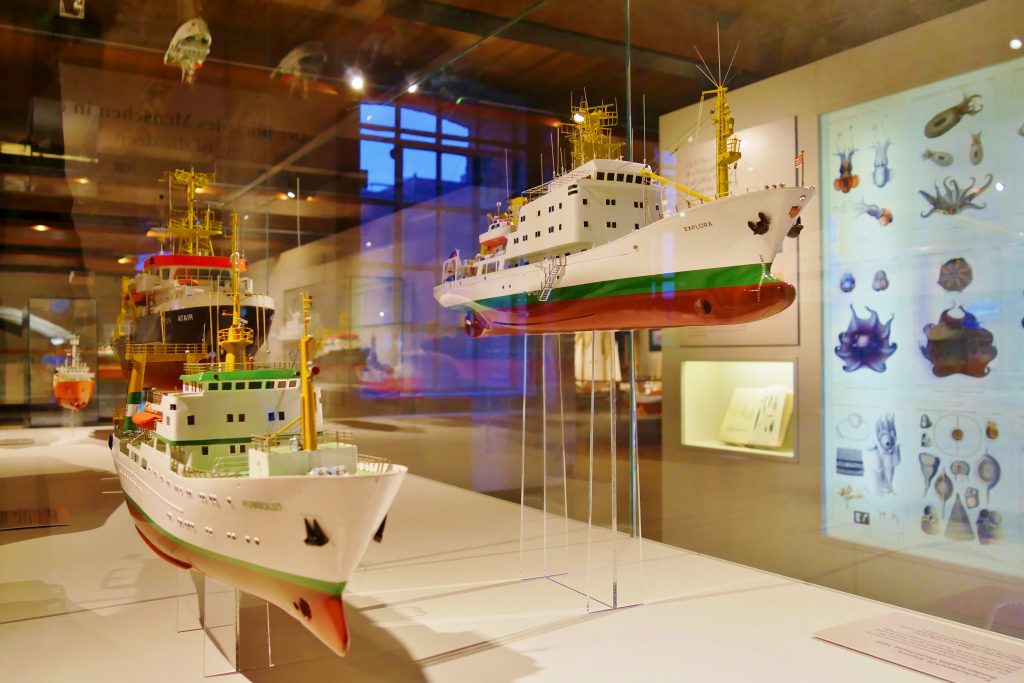
70 – Introduction: Deck 7, Marine Exploration
Audioguide:
The sea is a mystery. We know less about our oceans than we do about outer space. Many secrets still lie dormant beneath the surface, but experts from all over the world are in the process of solving one of the Earth’s last mysteries.
Exhibition deck 7 deals with the broad field of marine research.
Research institutions such as the Alfred Wegener Institute for Polar and Marine Research, the Geomar – Helmholtz Centre for Ocean Research Kiel, the MARUM Centre for Marine and Environmental Sciences at the University of Bremen and the Warnemünde Leibnitz Institute for Baltic Sea Research report on their work. Interdisciplinary, 140 scientists from 26 institutes have joined forces in the Kiel Cluster of Excellence „The Future Ocean“. The original exhibits of the renowned scientific institutions provide a detailed insight into the research work. The German Marine Research Consortium, in which all German marine research institutes are represented, presents itself as a partner.
The objective view of the oceans from basic research creates the prerequisite for our future actions. On the tour of Deck 7 you will dive down to marvel at the shapes, colours and sounds of the deep sea.
For the next station, please turn left at the end of this room.
71 – Expeditions now and then
Audioguide:
A look into the deep sea is only possible with the most modern technology. A thousand metres below the surface, humans are exposed to a pressure a hundred times higher than on land. The sperm whale dives to a depth of 3000 metres. A recreational diver only reaches 40 metres.
The history of deep-sea research is still relatively young. Between 1872 and ’76, expeditions by the British research ship „Challenger“ discovered almost 5000 unknown species in the deep sea. During the first German deep-sea expedition in 1898, the zoologist Carl Chun explored the waters of the South Atlantic. In 1960, the Swiss oceanographer Jacques Piccard succeeded in navigating the Mariana Trench to almost 11,000 metres with the submersible „Trieste“. The deep-sea trench in the Pacific Ocean is one of the deepest points on earth. US scientists first detected life at a depth of over 2,000 metres in 1977. A precise topography of the seabed has existed since 1995.
We still know little about the ocean system. In order to obtain well-founded research results, scientists use remote-controlled underwater vehicles. The diving robots explore the oceans and send fascinating data from the lightless ocean.
At the front of the room you can see a model of the German research vessel „Polarstern“ from the Alfred Wegener Institute for Polar and Marine Research.
The „Polarstern“ has nine laboratories, cold rooms and aquariums. Scientific equipment can be brought from aboard the double-walled icebreaker to a depth of 10,000 metres and penetrate a good 150 metres into the seabed. The world’s most powerful polar ship is equipped for interdisciplinary research voyages. The „Polarstern“ is in operation on about 320 days a year.
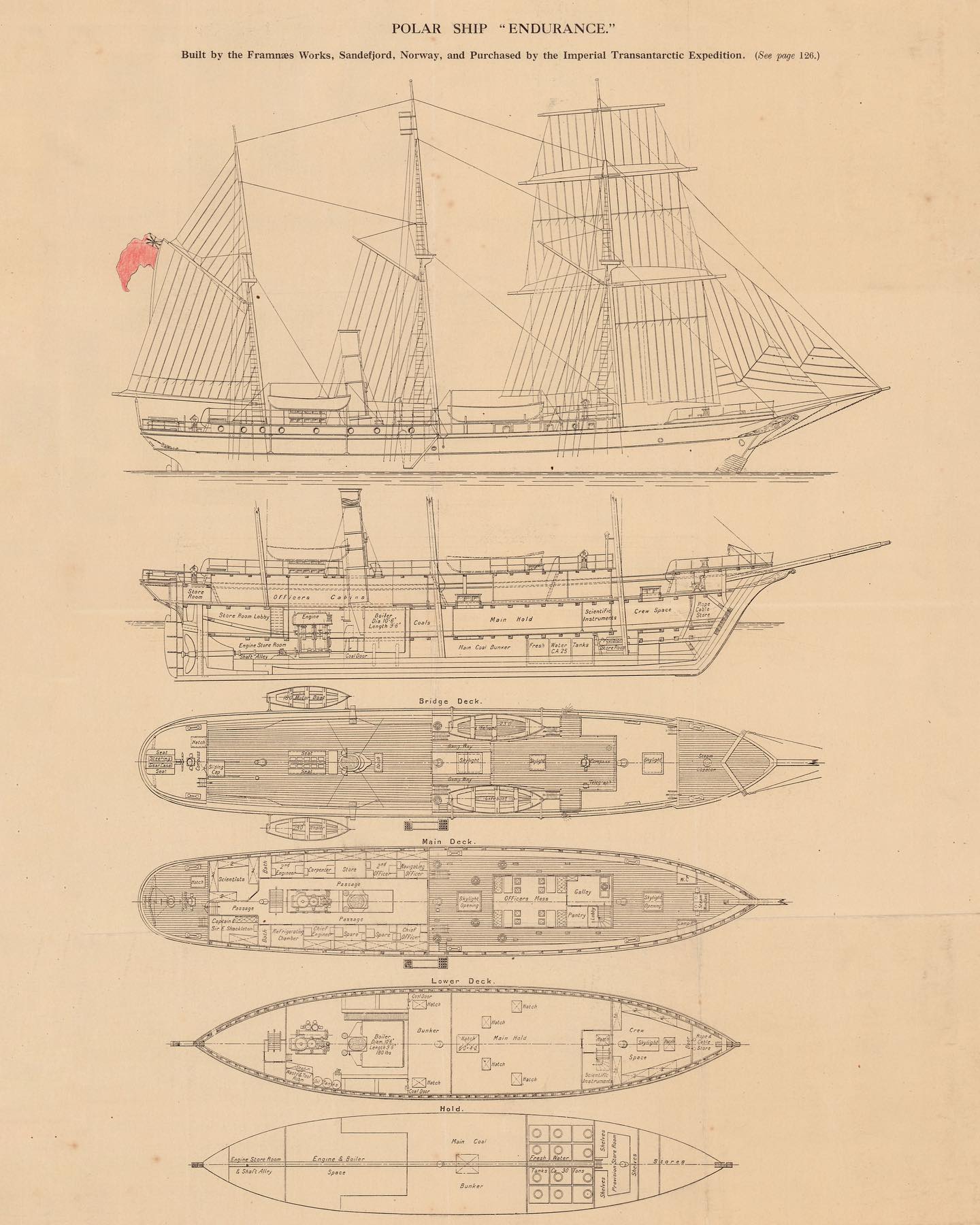
– Research and survey vessels:
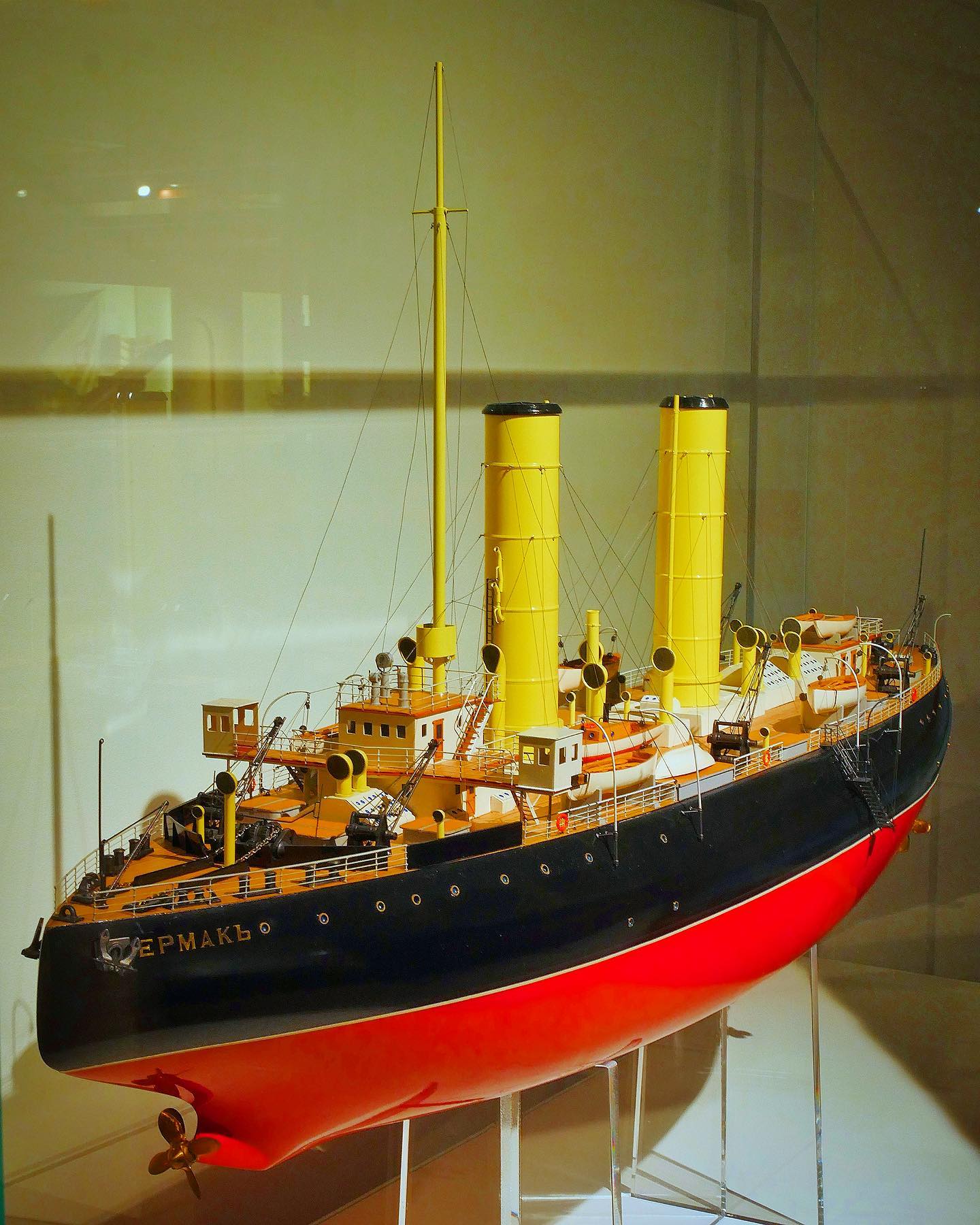
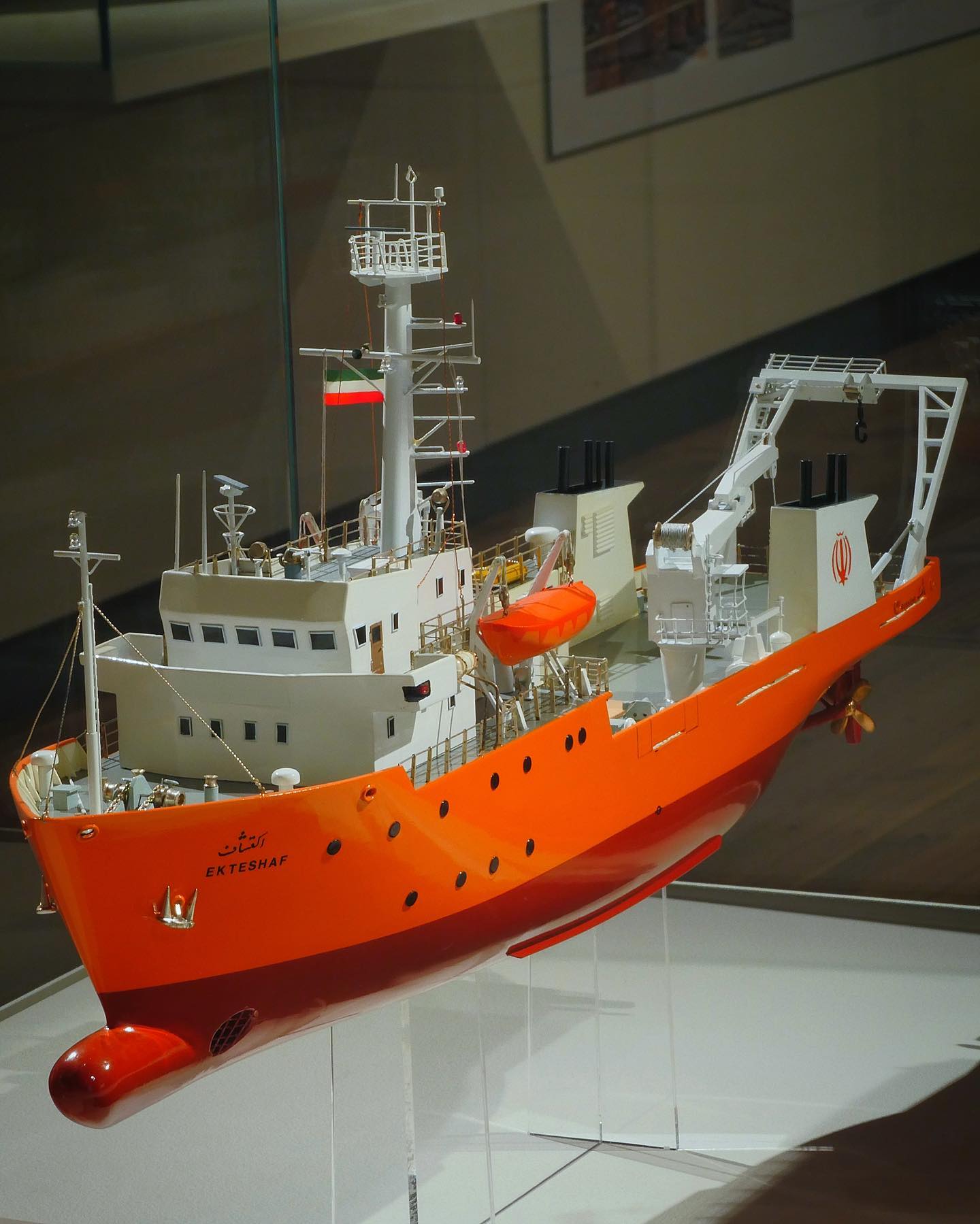
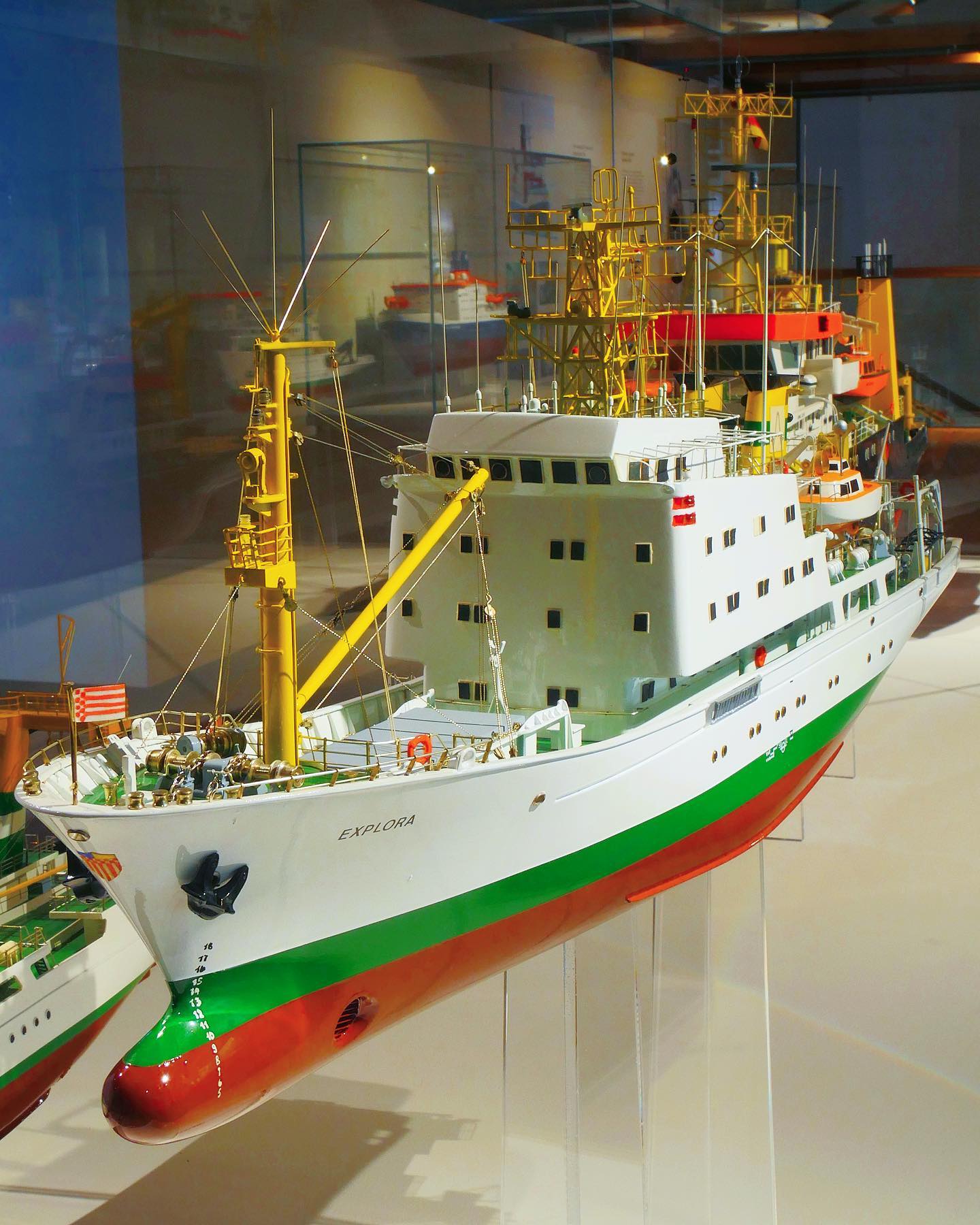
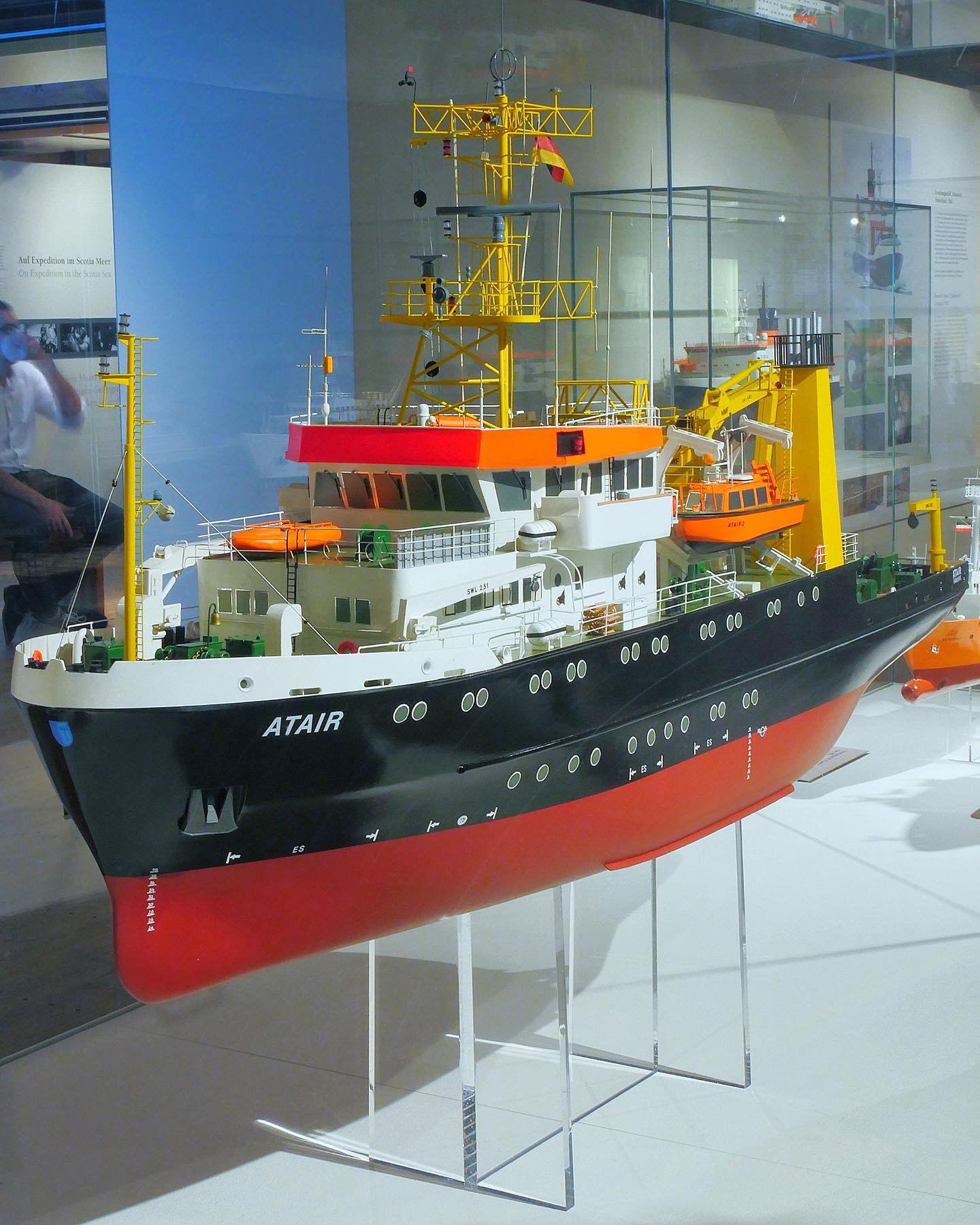
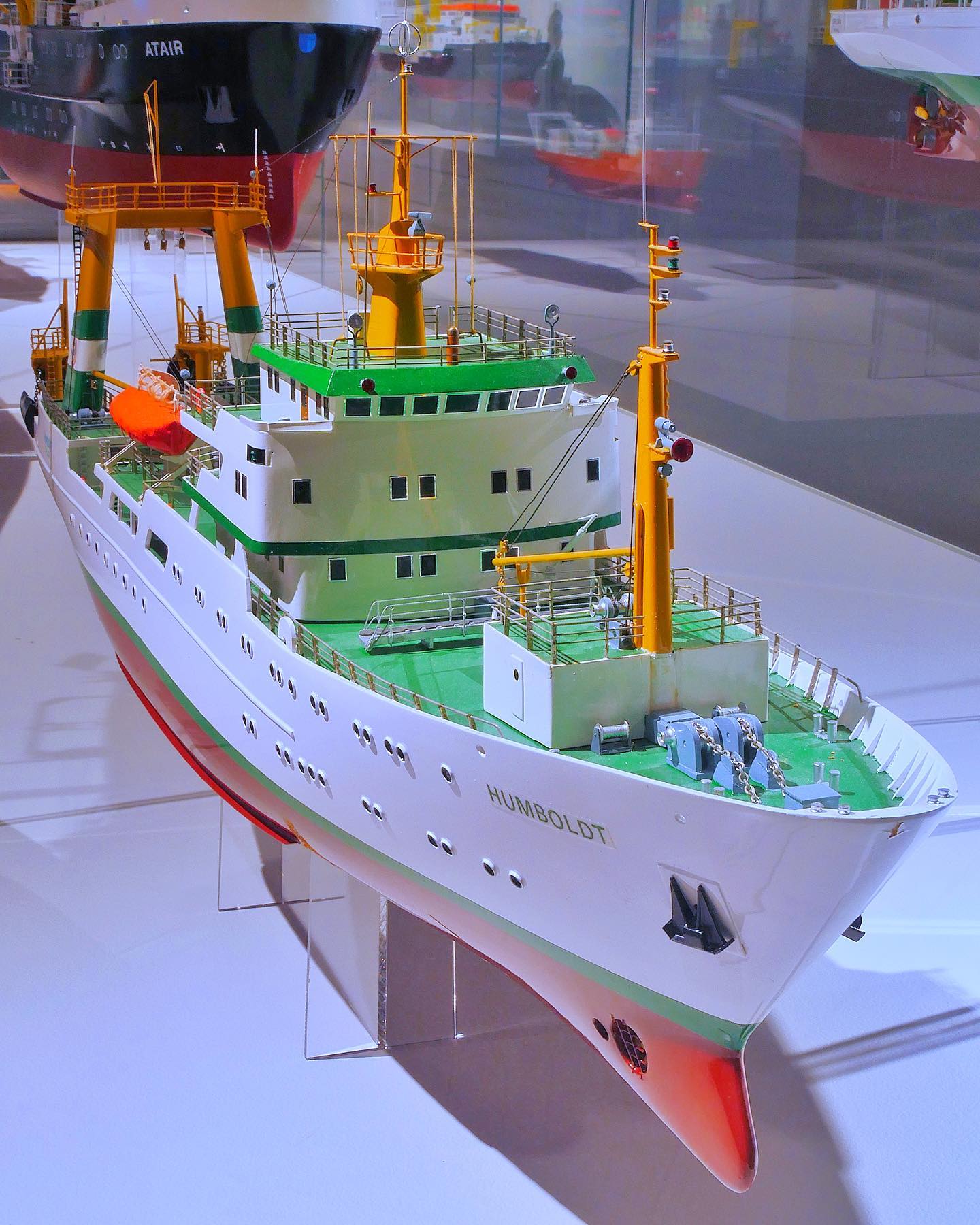
Currently not on display:
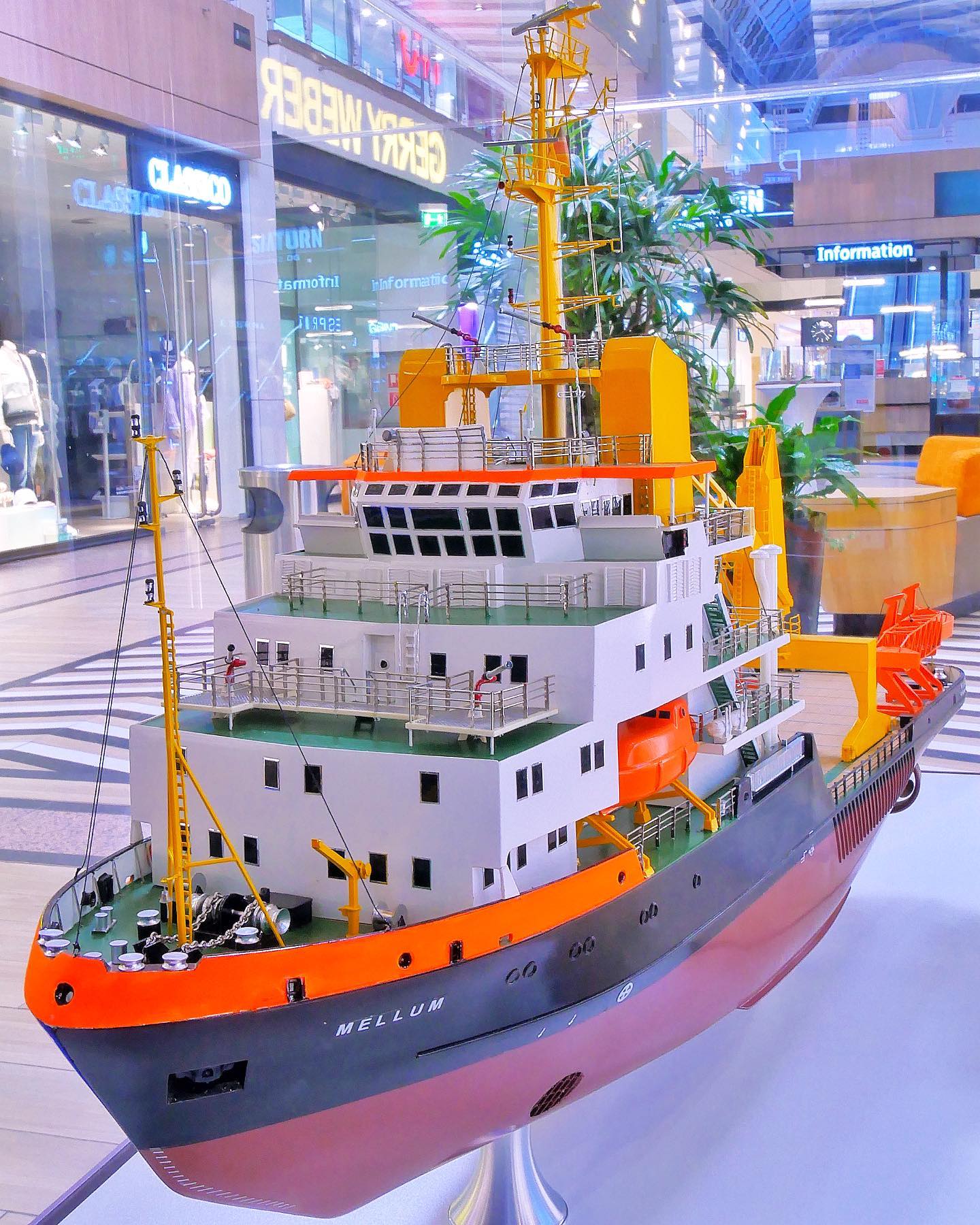
Research submarines:
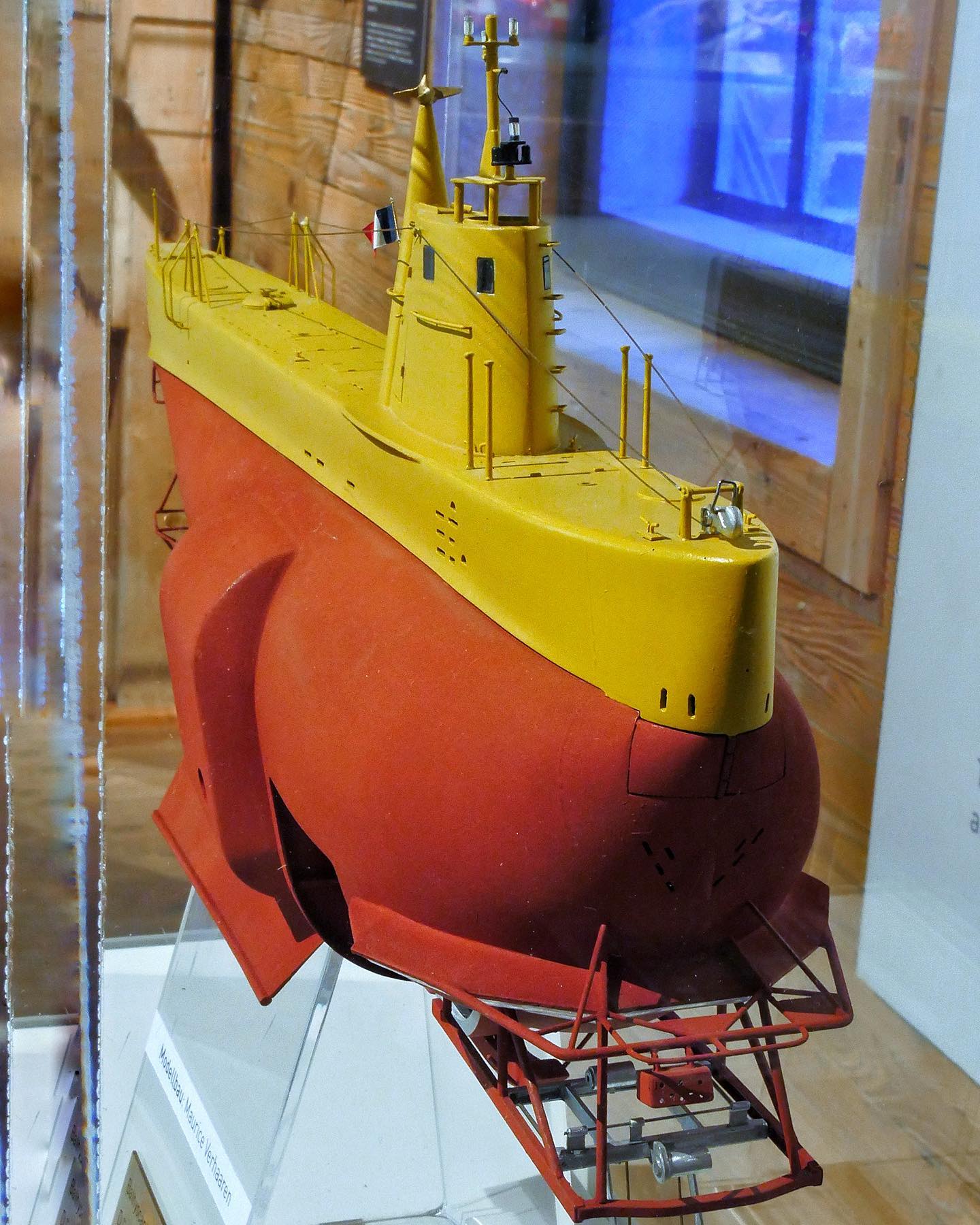
72 – Offshore Technologies
Audioguide:
Numerous oil deposits are found under the seabed. The deposits are extracted with the help of drilling platforms. This form of oil extraction is called „offshore production“.
In shallow waters, the drilling platforms stand on piers directly on the seabed. If the water is too deep, floating platforms are used.
The oil is extracted by a rotating drill pipe with a bit at the bottom. The vertical drill pipe transports the oil to the surface. Where vertical drilling is not possible, the so-called directional drilling method is used. Deposits near the coast can be reached horizontally from land using this method.
Crude oil is the most important raw material in industrial society. Daily consumption is estimated at about 85 million barrels. But the earth’s oil reserves are finite. Today, oil is being extracted in ever more remote areas and at ever deeper depths. As a result, the dangers to our environment are also increasing.
The world’s first oil wells were drilled in the summer of 1858 in the small community of Wietze, not far from Celle. Originally, they were looking for lignite, but accidentally struck oil.
Around 1900, Lower Saxony’s production volume already amounted to a good 27,000 tonnes. From Wietze, the oil was transported to Hamburg and Bremen for further processing.
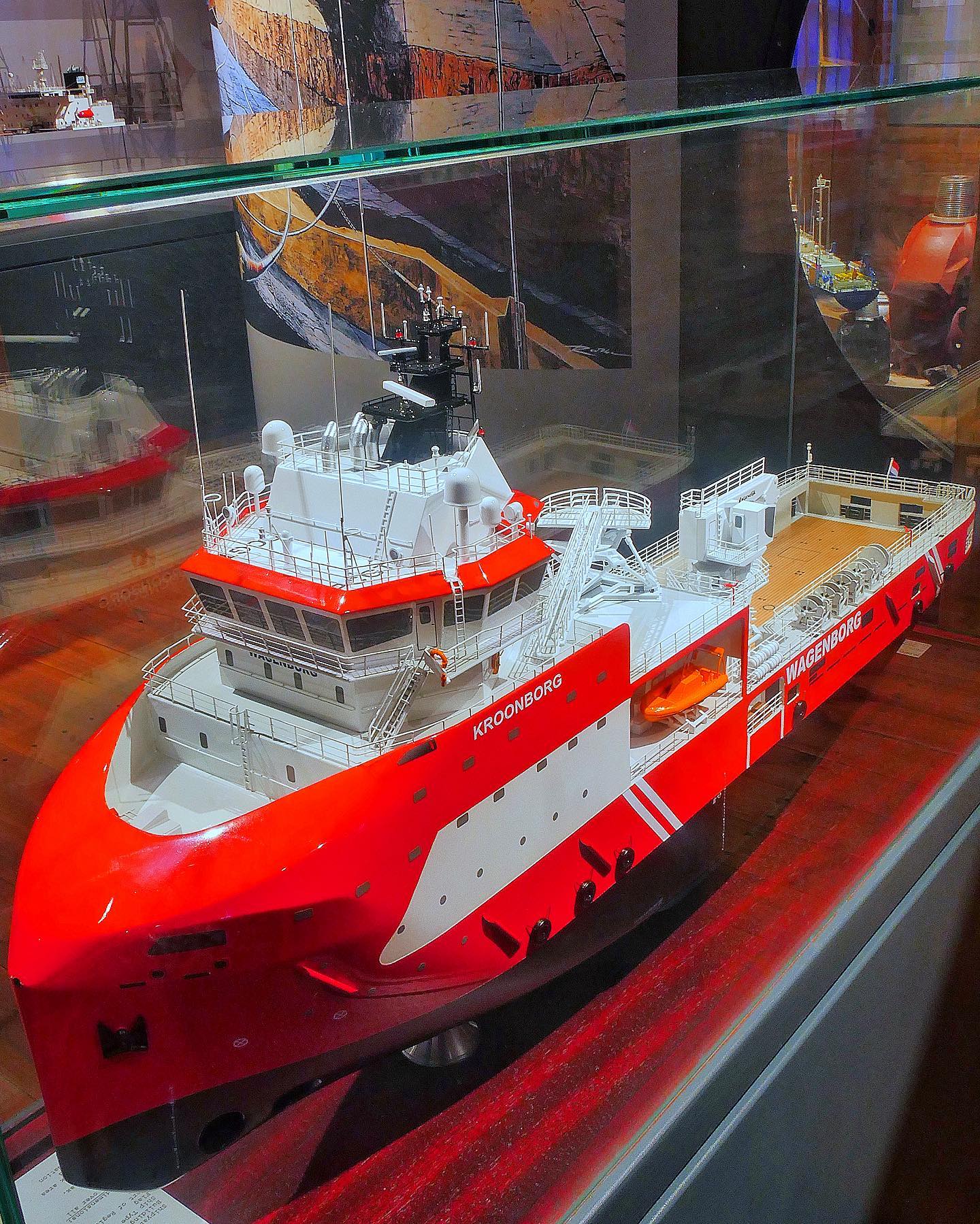
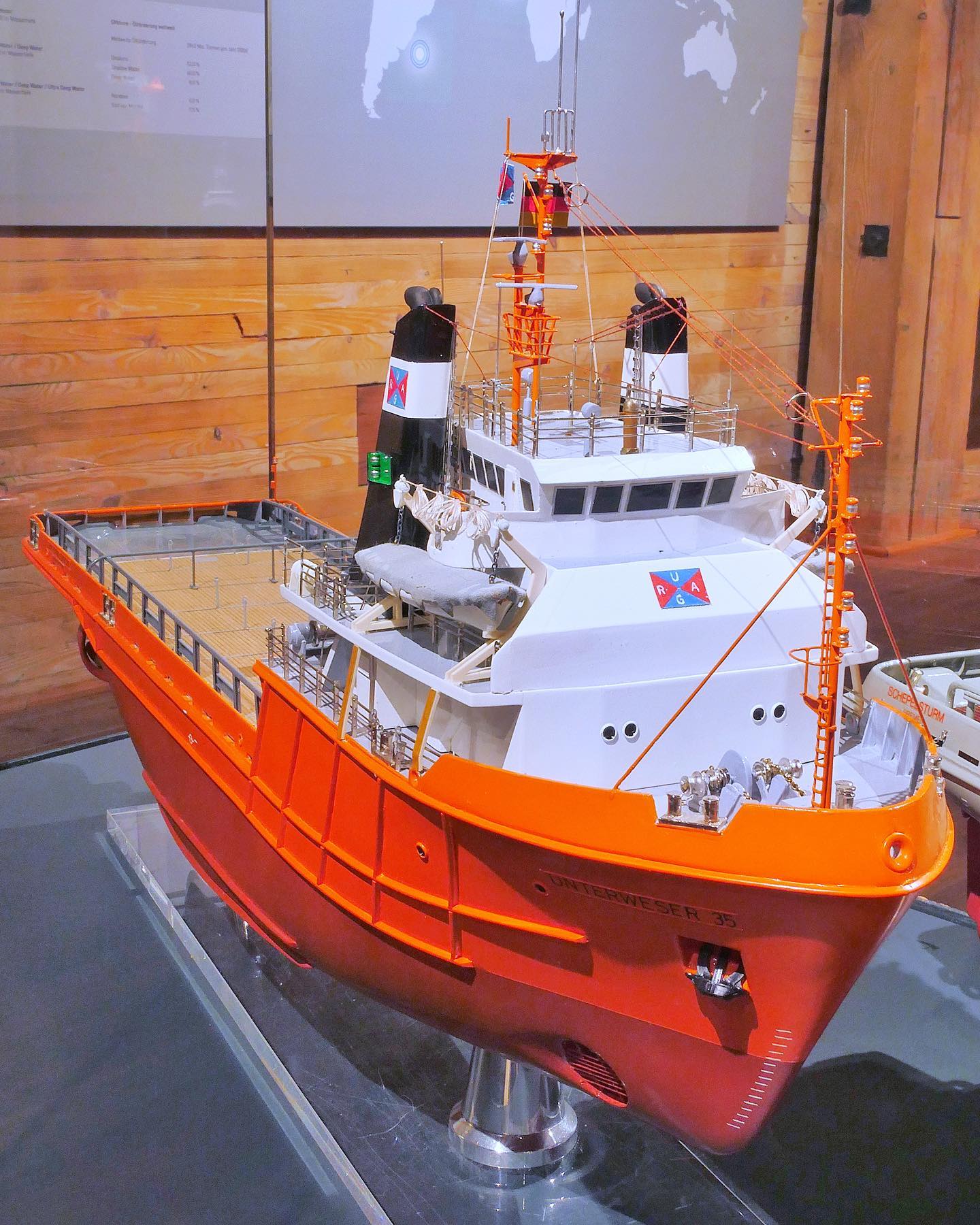
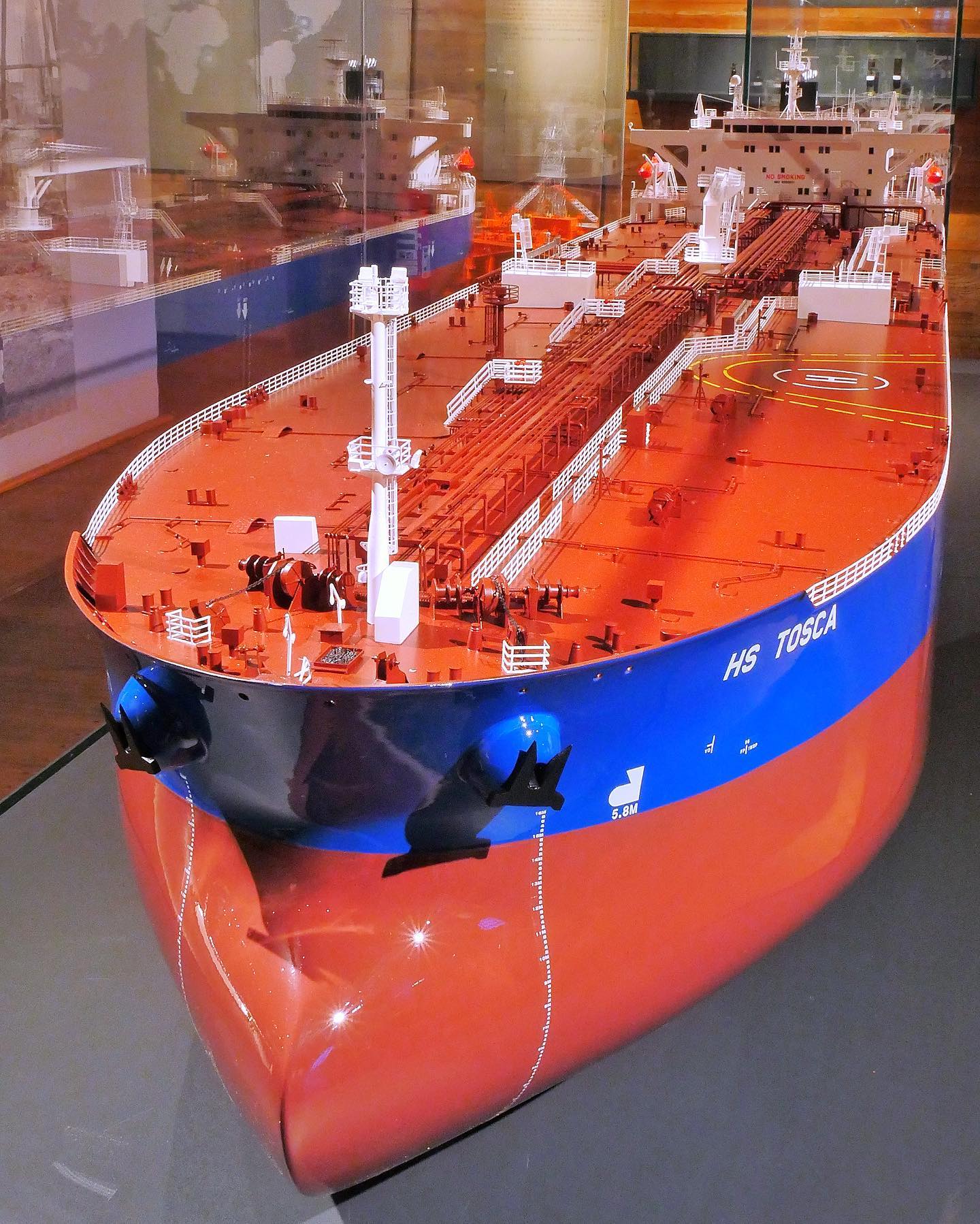
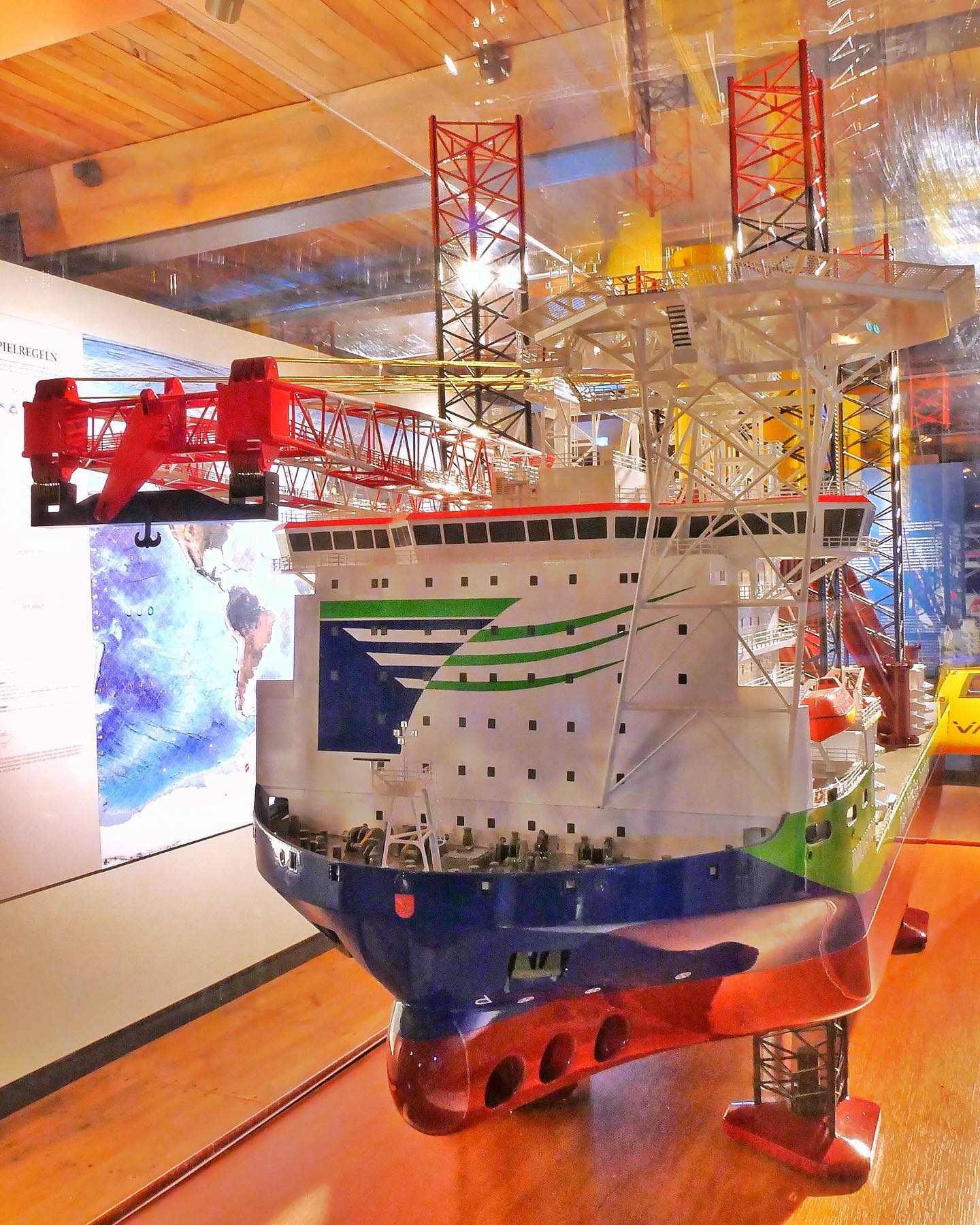
In other decks:
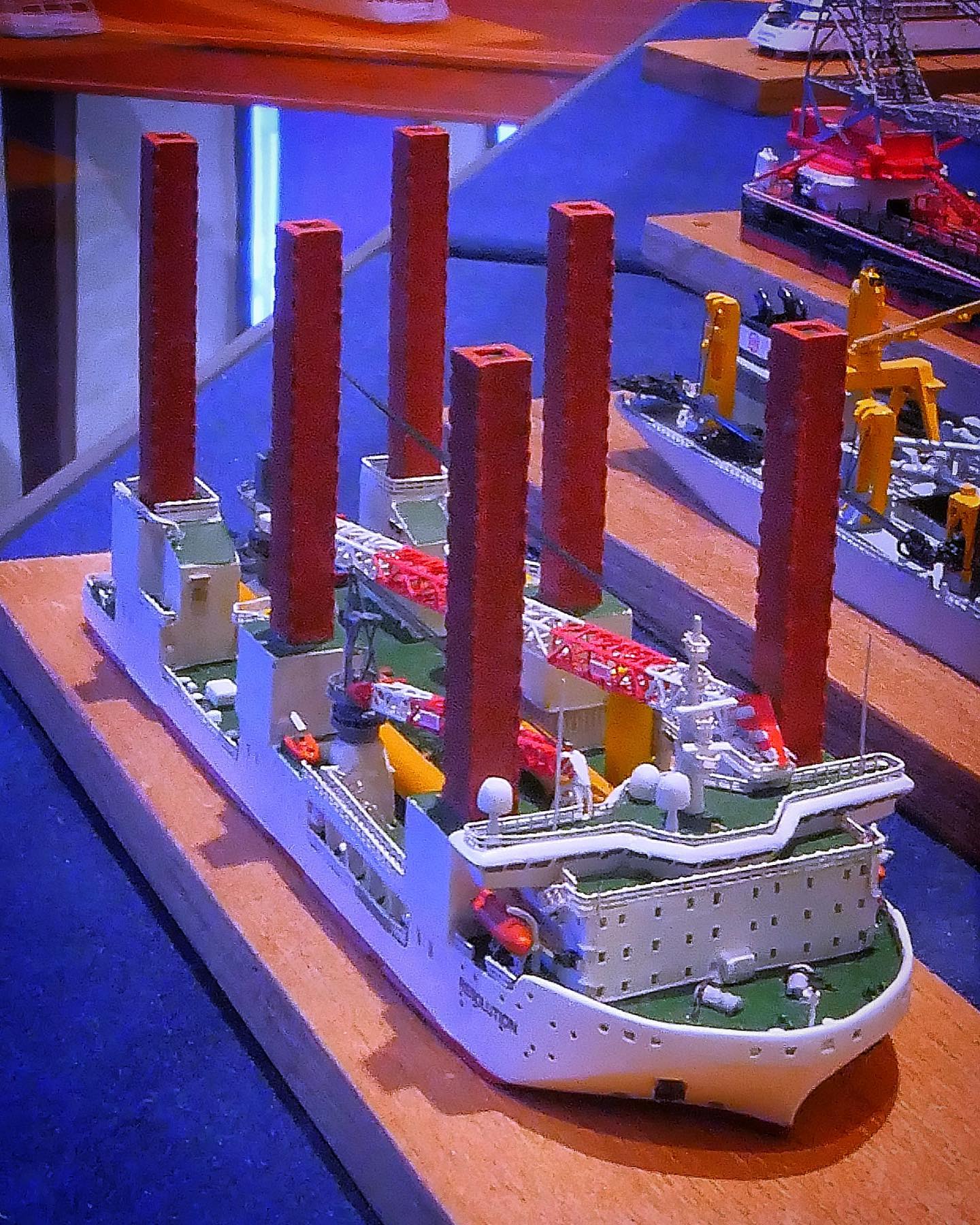
Currently not on display:
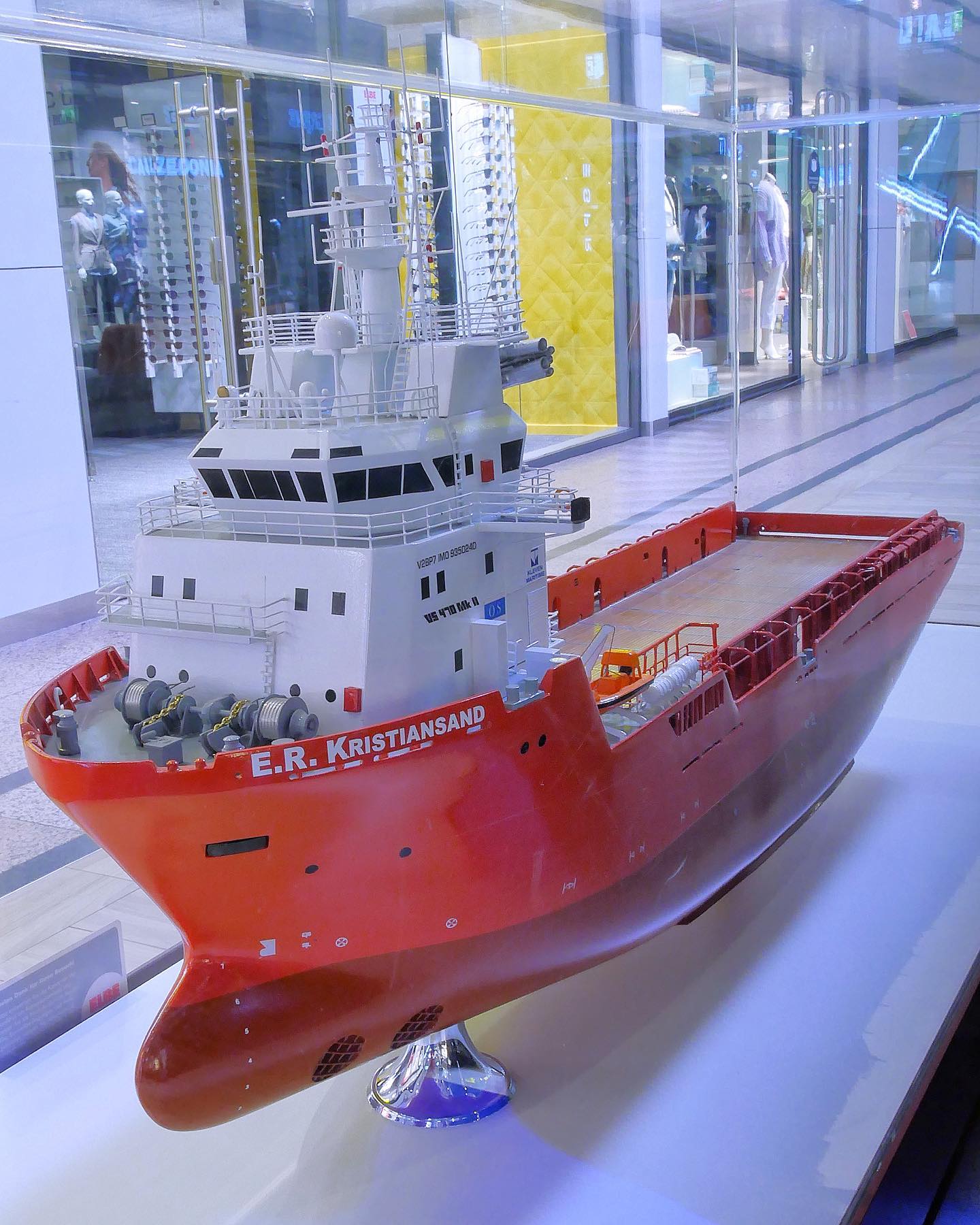
73 – Fisheries
Audioguide:
Fishing is both a source of food and income for millions of people. For thousands of years, fish were caught using nets, poles, fish traps or fish hooks. Today, fishing is mainly done industrially. Of the 95 million tonnes of fish caught each year, about two thirds end up on our plates. One third is processed into animal feed. Up to 39 million tonnes end up as bycatch back in the sea. Of the stocks in the world’s oceans, 17 per cent are overfished and a full 7 per cent are considered depleted. In order to stop the loss of species, sustainable and internationally binding fisheries are necessary.
In the open sea, fish are usually caught with trawl nets. The nets, which can be up to 70 metres long and 100 metres wide, are towed by boats. Floats and weights keep the net open.
Driftnet fishing is outlawed worldwide. Drift nets are vertically floating, rectangular nets up to 100 kilometres long, in whose meshes the fish get caught.
In deep-sea fishing, large loggers, trawlers and factory ships are used. Crab trawlers are used for coastal fishing. About 300 of these smaller motor vessels are in use on the German North Sea and Baltic Sea coasts.
You can learn more about the different types of ships and fishing methods on the wall newspaper in the middle of the exhibition room.
Internationally controversial is whaling, which today is only practised by a few nations. The tran of the whale was originally used for the production of soap, candles and lamp oil.
In the beginning, whales were hunted with rowing boats, but later catching ships and whaling steamers with harpoon guns were used. Today, the whale is an endangered species. In order to protect the stocks, an international agreement has regulated the catch quotas since 1948.
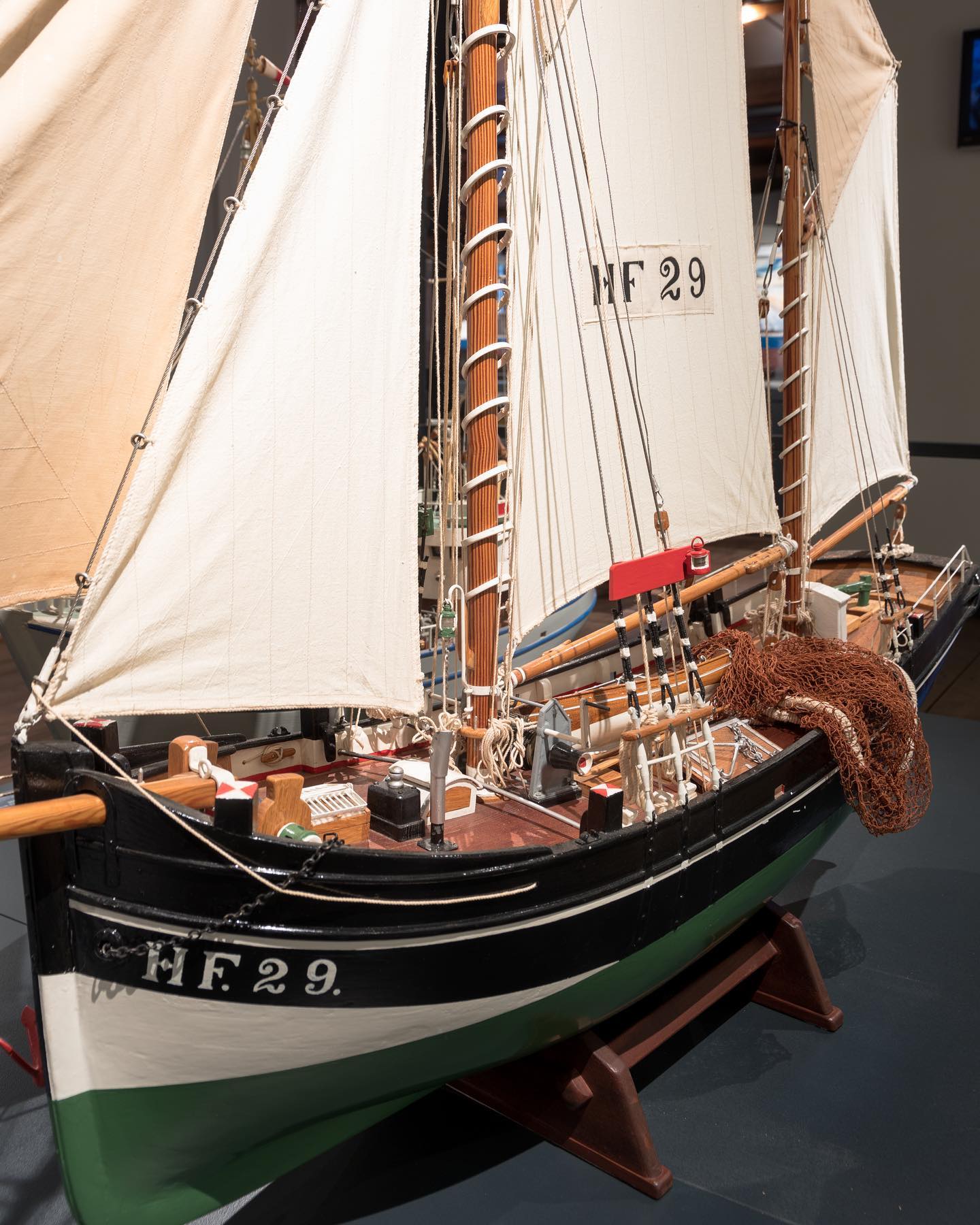
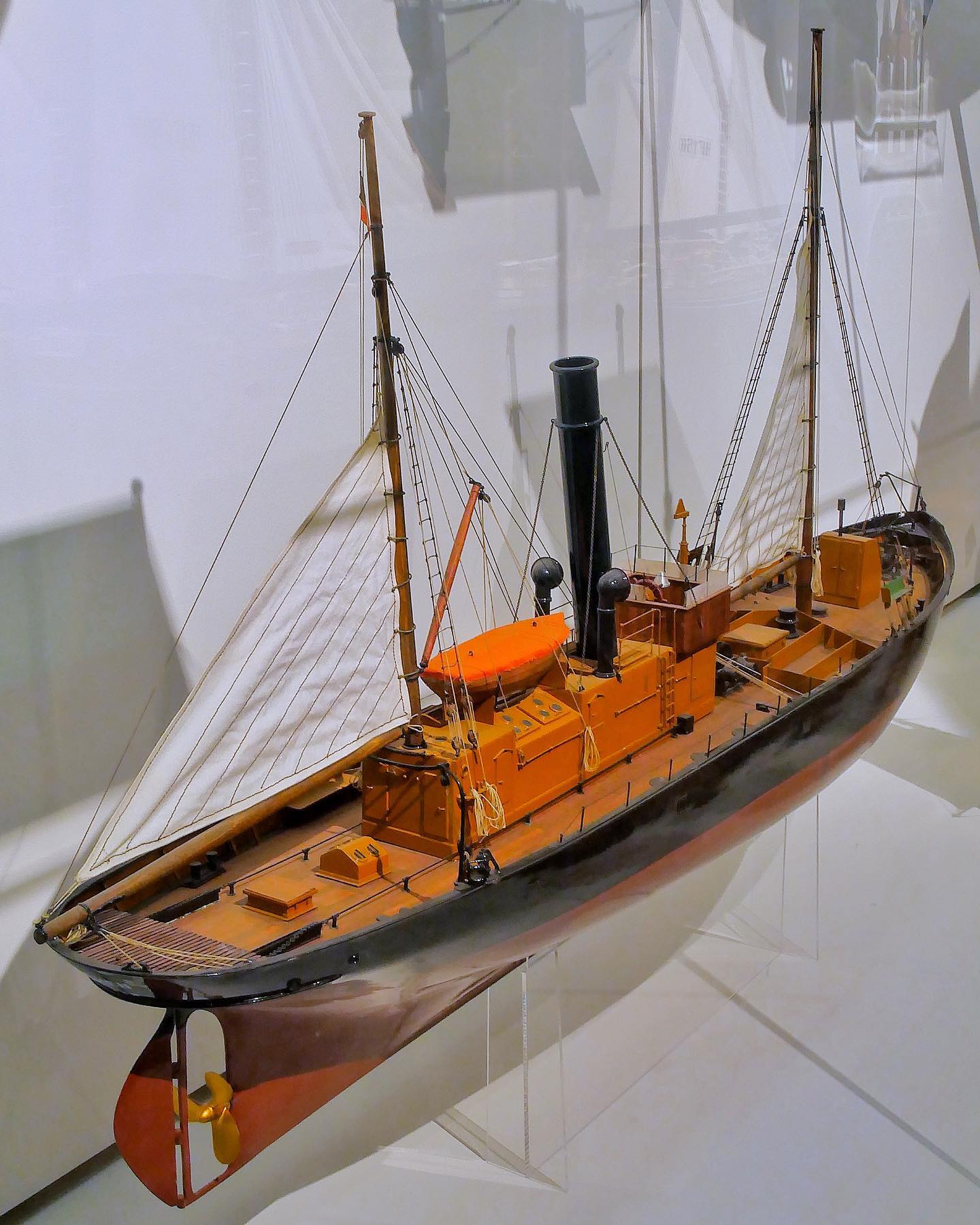
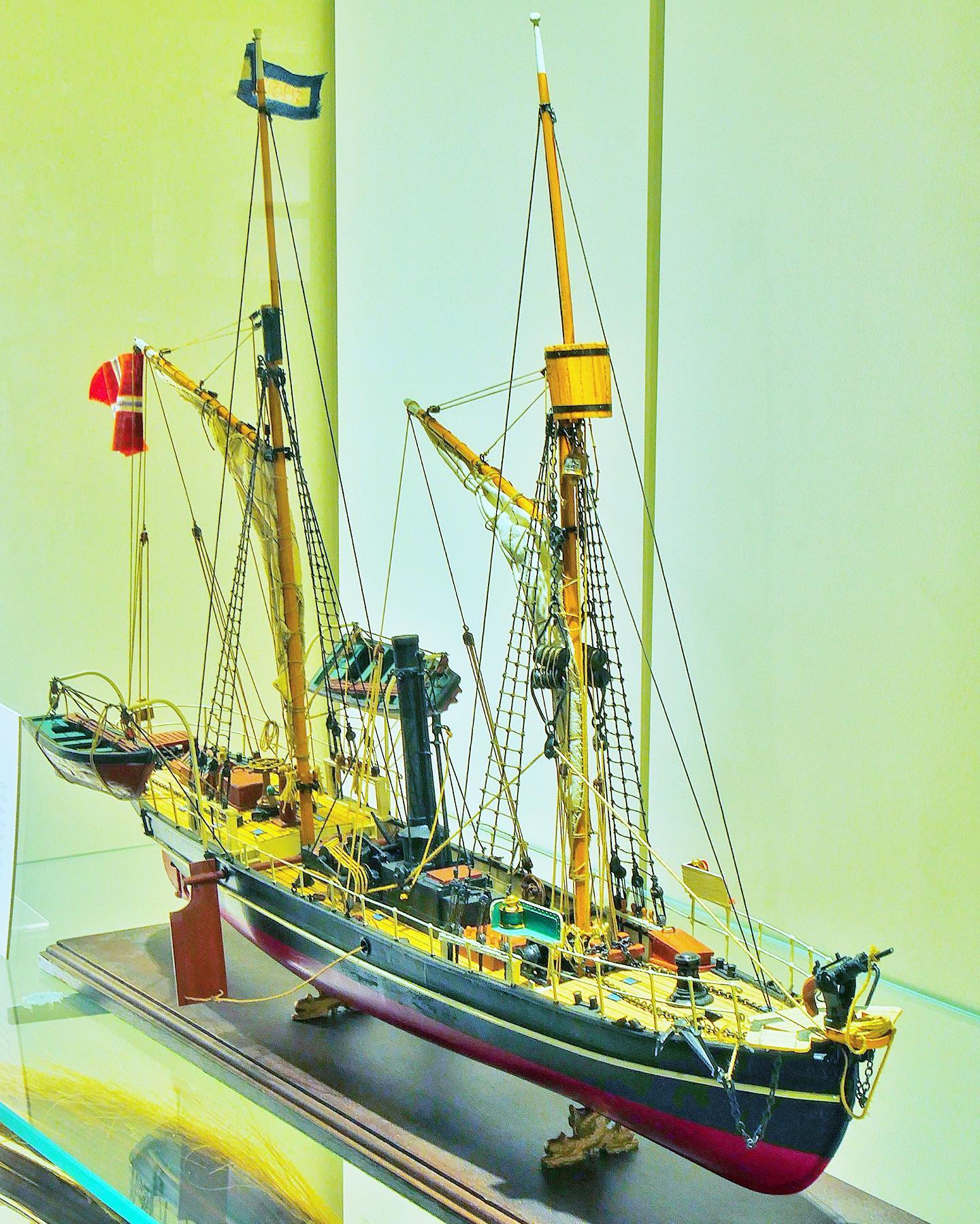
Fishing vessels in other decks:
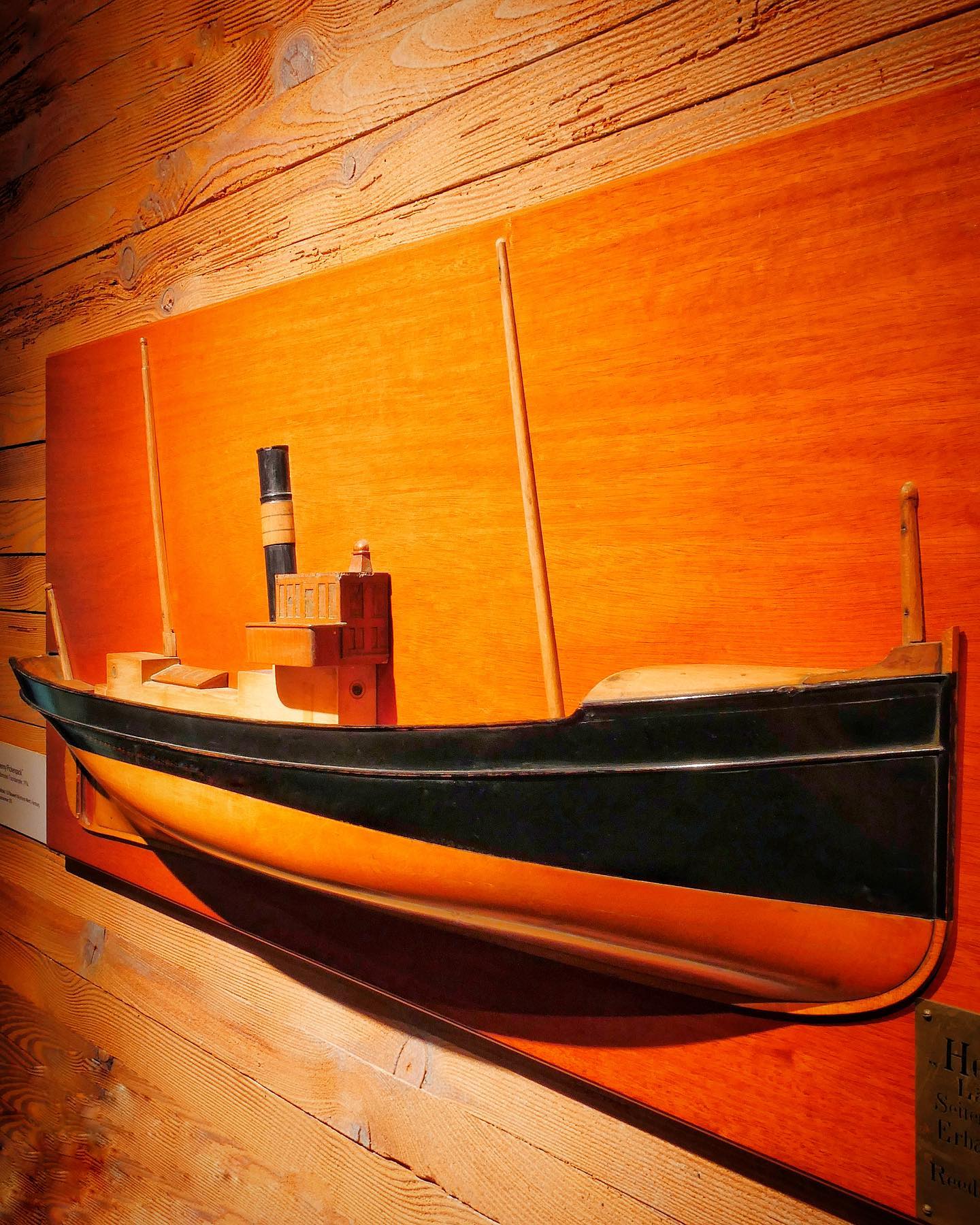
74 – The Future of the Oceans
Audioguide:
The ocean plays a crucial role in climate change. More than 140 scientists have joined forces in the Kiel research network „The Future Ocean“. They are taking on the task of researching the change in the oceans.
The network involves disciplines that have not previously been involved in marine research. Marine scientists and geologists are investigating important topics for the future. They do this in an interdisciplinary way with medical scientists, mathematicians, lawyers as well as economists and social scientists. Topics such as ocean acidification, tsunamis and the problem of increasing overfishing are the subject of investigation. The areas of medicine from the sea and maritime law are also being considered.
„Understanding the ocean means shaping the future“ – the research network „The Future Ocean“ wants to make recommendations for the long-term management of the ocean.
75 – Alfred Wegener
Audioguide:
